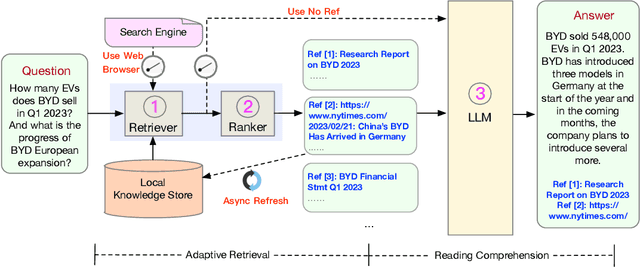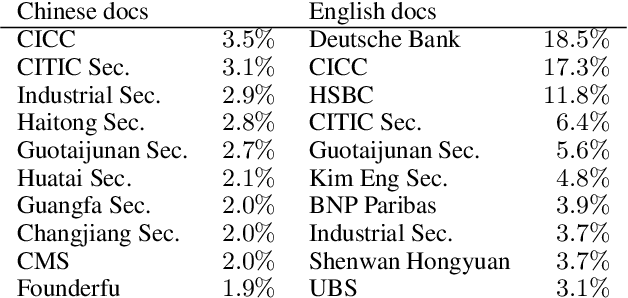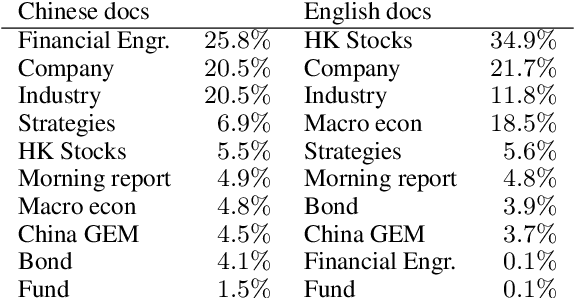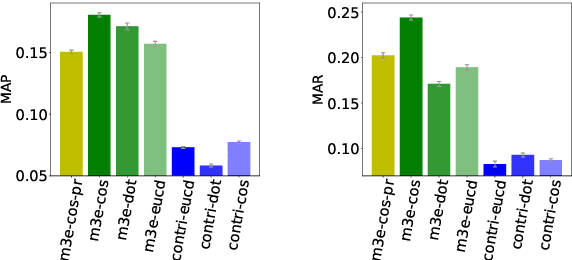Hongyu Zhao
A precise detection method for transient micro short-circuit faults of lithium-ion batteries through signal processing
May 20, 2025Abstract:A specific failure mode designated as transient micro-short circuit (TMSC) has been identified in practical battery systems, exhibiting subtle and latent characteristics with measurable voltage deviations. To further improve the safe use of lithium-ion batteries (LIBs), this letter introduces a novel method for the precise detection of this TMSC faults within LIBs. The method applies the continuous wavelet transform (CWT) to voltage and current signals, followed by the identification of micro-scale anomalies through the analysis of the coherence in the wavelet spectrum at specific frequency. Through designed fault experiments, the effec-tiveness of this method has been verified. Result demon-strates that it can effectively capture micro-faults with a voltage drop as low as 30 mV within just a few seconds. Furthermore, the proposed method is inherently highly robust and is able to effectively detect false faults and hidden faults under varying current loads, which highlights the superiority of this method.
Towards Artificial Intelligence Research Assistant for Expert-Involved Learning
May 03, 2025Abstract:Large Language Models (LLMs) and Large Multi-Modal Models (LMMs) have emerged as transformative tools in scientific research, yet their reliability and specific contributions to biomedical applications remain insufficiently characterized. In this study, we present \textbf{AR}tificial \textbf{I}ntelligence research assistant for \textbf{E}xpert-involved \textbf{L}earning (ARIEL), a multimodal dataset designed to benchmark and enhance two critical capabilities of LLMs and LMMs in biomedical research: summarizing extensive scientific texts and interpreting complex biomedical figures. To facilitate rigorous assessment, we create two open-source sets comprising biomedical articles and figures with designed questions. We systematically benchmark both open- and closed-source foundation models, incorporating expert-driven human evaluations conducted by doctoral-level experts. Furthermore, we improve model performance through targeted prompt engineering and fine-tuning strategies for summarizing research papers, and apply test-time computational scaling to enhance the reasoning capabilities of LMMs, achieving superior accuracy compared to human-expert corrections. We also explore the potential of using LMM Agents to generate scientific hypotheses from diverse multimodal inputs. Overall, our results delineate clear strengths and highlight significant limitations of current foundation models, providing actionable insights and guiding future advancements in deploying large-scale language and multi-modal models within biomedical research.
BenTo: Benchmark Task Reduction with In-Context Transferability
Oct 17, 2024Abstract:Evaluating large language models (LLMs) is costly: it requires the generation and examination of LLM outputs on a large-scale benchmark of various tasks. This paper investigates how to efficiently reduce the tasks used to benchmark LLMs without affecting the evaluation quality. Our study reveals that task transferability and relevance provide critical information to identify the most representative subset of tasks via optimizing a facility location function. We propose a practically efficient metric for estimating the transferability between two tasks via in-context learning (ICL). By analyzing the pairwise transferability, we can reduce tasks in a modern LLM benchmark (e.g., MMLU or FLAN) to 5% while inducing only a <4% difference to the evaluation on the original benchmark. Compared to prior works, our method is training-free, gradient-free, and highly efficient requiring ICL only.
Geneverse: A collection of Open-source Multimodal Large Language Models for Genomic and Proteomic Research
Jun 21, 2024Abstract:The applications of large language models (LLMs) are promising for biomedical and healthcare research. Despite the availability of open-source LLMs trained using a wide range of biomedical data, current research on the applications of LLMs to genomics and proteomics is still limited. To fill this gap, we propose a collection of finetuned LLMs and multimodal LLMs (MLLMs), known as Geneverse, for three novel tasks in genomic and proteomic research. The models in Geneverse are trained and evaluated based on domain-specific datasets, and we use advanced parameter-efficient finetuning techniques to achieve the model adaptation for tasks including the generation of descriptions for gene functions, protein function inference from its structure, and marker gene selection from spatial transcriptomic data. We demonstrate that adapted LLMs and MLLMs perform well for these tasks and may outperform closed-source large-scale models based on our evaluations focusing on both truthfulness and structural correctness. All of the training strategies and base models we used are freely accessible.
Mosaic IT: Enhancing Instruction Tuning with Data Mosaics
May 22, 2024Abstract:Finetuning large language models with a variety of instruction-response pairs has enhanced their capability to understand and follow instructions. Current instruction tuning primarily relies on teacher models or human intervention to generate and refine the instructions and responses, which are costly, non-sustainable, and may lack diversity. In this paper, we introduce Mosaic Instruction Tuning (Mosaic-IT), a human/model-free method that can efficiently create rich and diverse augmentations from existing instruction tuning data to enhance the finetuned LLM.Mosaic-IT randomly concatenates multiple instruction data into one and trains the model to produce the corresponding responses with predefined higher-level meta-instructions to strengthen its multi-step instruction-following and format-following skills. Our extensive evaluations demonstrate a superior performance and training efficiency of Mosaic-IT, which achieves consistent performance improvements over various benchmarks and an 80% reduction in training costs compared with original instruction tuning. Our codes and data are available at https://github.com/tianyi-lab/Mosaic-IT.
Superfiltering: Weak-to-Strong Data Filtering for Fast Instruction-Tuning
Feb 01, 2024



Abstract:Instruction tuning is critical to improve LLMs but usually suffers from low-quality and redundant data. Data filtering for instruction tuning has proved important in improving both the efficiency and performance of the tuning process. But it also leads to extra cost and computation due to the involvement of LLMs in this process. To reduce the filtering cost, we study Superfiltering: Can we use a smaller and weaker model to select data for finetuning a larger and stronger model? Despite the performance gap between weak and strong language models, we find their highly consistent capability to perceive instruction difficulty and data selection results. This enables us to use a much smaller and more efficient model to filter the instruction data used to train a larger language model. Not only does it largely speed up the data filtering, but the filtered-data-finetuned LLM achieves even better performance on standard benchmarks. Extensive experiments validate the efficacy and efficiency of our approach.
Real-time object detection and robotic manipulation for agriculture using a YOLO-based learning approach
Jan 28, 2024Abstract:The optimisation of crop harvesting processes for commonly cultivated crops is of great importance in the aim of agricultural industrialisation. Nowadays, the utilisation of machine vision has enabled the automated identification of crops, leading to the enhancement of harvesting efficiency, but challenges still exist. This study presents a new framework that combines two separate architectures of convolutional neural networks (CNNs) in order to simultaneously accomplish the tasks of crop detection and harvesting (robotic manipulation) inside a simulated environment. Crop images in the simulated environment are subjected to random rotations, cropping, brightness, and contrast adjustments to create augmented images for dataset generation. The you only look once algorithmic framework is employed with traditional rectangular bounding boxes for crop localization. The proposed method subsequently utilises the acquired image data via a visual geometry group model in order to reveal the grasping positions for the robotic manipulation.
Multi-Ship Tracking by Robust Similarity metric
Oct 08, 2023Abstract:Multi-ship tracking (MST) as a core technology has been proven to be applied to situational awareness at sea and the development of a navigational system for autonomous ships. Despite impressive tracking outcomes achieved by multi-object tracking (MOT) algorithms for pedestrian and vehicle datasets, these models and techniques exhibit poor performance when applied to ship datasets. Intersection of Union (IoU) is the most popular metric for computing similarity used in object tracking. The low frame rates and severe image shake caused by wave turbulence in ship datasets often result in minimal, or even zero, Intersection of Union (IoU) between the predicted and detected bounding boxes. This issue contributes to frequent identity switches of tracked objects, undermining the tracking performance. In this paper, we address the weaknesses of IoU by incorporating the smallest convex shapes that enclose both the predicted and detected bounding boxes. The calculation of the tracking version of IoU (TIoU) metric considers not only the size of the overlapping area between the detection bounding box and the prediction box, but also the similarity of their shapes. Through the integration of the TIoU into state-of-the-art object tracking frameworks, such as DeepSort and ByteTrack, we consistently achieve improvements in the tracking performance of these frameworks.
MuSe-GNN: Learning Unified Gene Representation From Multimodal Biological Graph Data
Sep 29, 2023



Abstract:Discovering genes with similar functions across diverse biomedical contexts poses a significant challenge in gene representation learning due to data heterogeneity. In this study, we resolve this problem by introducing a novel model called Multimodal Similarity Learning Graph Neural Network, which combines Multimodal Machine Learning and Deep Graph Neural Networks to learn gene representations from single-cell sequencing and spatial transcriptomic data. Leveraging 82 training datasets from 10 tissues, three sequencing techniques, and three species, we create informative graph structures for model training and gene representations generation, while incorporating regularization with weighted similarity learning and contrastive learning to learn cross-data gene-gene relationships. This novel design ensures that we can offer gene representations containing functional similarity across different contexts in a joint space. Comprehensive benchmarking analysis shows our model's capacity to effectively capture gene function similarity across multiple modalities, outperforming state-of-the-art methods in gene representation learning by up to 97.5%. Moreover, we employ bioinformatics tools in conjunction with gene representations to uncover pathway enrichment, regulation causal networks, and functions of disease-associated or dosage-sensitive genes. Therefore, our model efficiently produces unified gene representations for the analysis of gene functions, tissue functions, diseases, and species evolution.
WeaverBird: Empowering Financial Decision-Making with Large Language Model, Knowledge Base, and Search Engine
Aug 30, 2023



Abstract:We present WeaverBird, an intelligent dialogue system designed specifically for the finance domain. Our system harnesses a large language model of GPT architecture that has been tuned using extensive corpora of finance-related text. As a result, our system possesses the capability to understand complex financial queries, such as "How should I manage my investments during inflation?", and provide informed responses. Furthermore, our system incorporates a local knowledge base and a search engine to retrieve relevant information. The final responses are conditioned on the search results and include proper citations to the sources, thus enjoying an enhanced credibility. Through a range of finance-related questions, we have demonstrated the superior performance of our system compared to other models. To experience our system firsthand, users can interact with our live demo at https://weaverbird.ttic.edu, as well as watch our 2-min video illustration at https://www.youtube.com/watch?v=fyV2qQkX6Tc.
 Add to Chrome
Add to Chrome Add to Firefox
Add to Firefox Add to Edge
Add to Edge